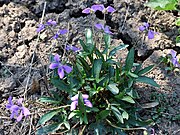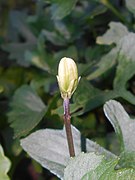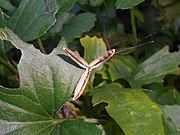| Viola palmata | |
|---|---|

| |
| At the University of Wrocław Botanical Garden | |

| |
| Close-up of leaf | |
|
Scientific classification
| |
| Kingdom: | Plantae |
| Clade: | Tracheophytes |
| Clade: | Angiosperms |
| Clade: | Eudicots |
| Clade: | Rosids |
| Order: | Malpighiales |
| Family: | Violaceae |
| Genus: | Viola |
| Species: | V. palmata
|
| Binomial name | |
| Viola palmata | |
| Synonyms [1] | |
|
List
| |
Viola palmata (syn. Viola triloba), the trilobed violet, early blue violet, or wood violet (names it shares with other members of its genus), is a species of flowering plant in the family Violaceae. [2] It is native to southern Ontario and the central and eastern United States, and it has been introduced to Austria, Germany, and Japan. [1] It is generally found growing in rich upland hardwood forests. [3]
References
- ^ a b "Viola palmata L." Plants of the World Online. Royal Botanic Gardens, Kew. Retrieved 27 December 2023.
-
^
"Viola palmata L. Taxonomic Serial No.: 22125". itis.gov. Integrated Taxonomic Information System (ITIS). 2023. Retrieved 27 December 2023.
...three-lobe violet
- ^ "Account for Three-lobed Violet - Viola palmata L." Vascular Plants of North Carolina. North Carolina Biodiversity Project and North Carolina State Parks. 2023. Retrieved 27 December 2023.




